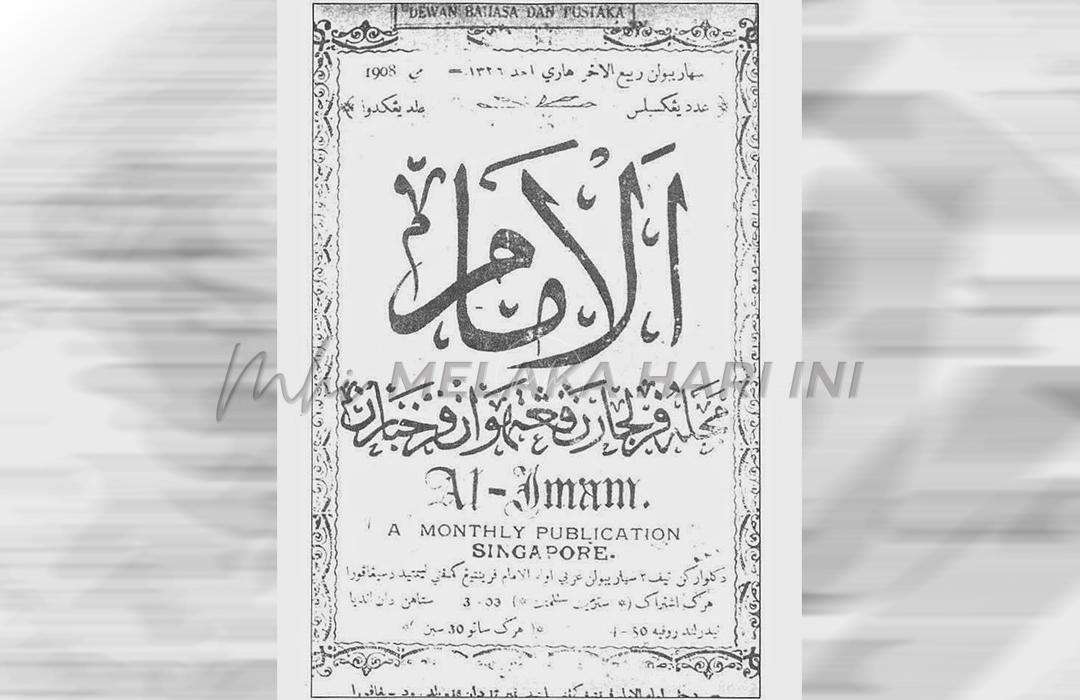
Al-Imam and Japan: Syed Shaykh al-Hady’s Cry to the Malays
IT was Japan, with her symbol of the Rising Sun, that gave impetus to the publication of reformist periodical Al-Imam (1906-1908) in the Malay journalism hub of Singapura. The editorial in its first issue on 23 July 1906 contended that that the Europeans could not have extended their rule “from West to East without the weapon of knowledge.”
And the Japanese, fewer than 50 million people, could never have defeated her enemies who were hundreds of millions strong if they were not in possession of the same knowledge.
The maiden issue also contained some news items on Japan. Al-Imam (The Leader), modelled on the Eqyptian journal al-Manar (The Lighthouse), led by Muhammad Rashid Rida in Cairo, was widely distributed throughout the Malay Archipelago. Al-Imam’s alliance with Japan can be seen against the background of reform and renewal – the climate in the Muslim world echoing the modernist reform movement in Eqypt in the late 1800s. The Islah (reform) resonated throughout Muslim societies in the greater part of the Muslim world and in the Tanah Air.
Tanjong, in Pulau Pinang was a center for reform consciousness, with a significant readership among the Malays, the Jawi and Arab Peranakan and other Muslim communities, generating debates on Islam from theology to politics. And of course, the Kaum Muda faction in the Malay states. The Muhammadiyah movement beginning 1912 was directly inspired by Muhammad Abduh, Rashid Rida, and Jamaluddin Al-Afghani, the three main figures of the Reform movement.
In its 21 August 1906 issue, al-Imam made a proposition on the benefit to Japan should its people convert to Islam. This would ally the Japanese with millions of Muslims throughout the world. Later on 14 April 1907, it spoke of the benefit to Muslims should the Japanese convert. Al-Imam wrote” “We would be able to mingle with them like water with sugar (seperti air dalam gula) and we could study from them and be taught by them about all the amazing things which have recently appeared in the world…
…we could then enter the group of those people who are civilized…and the benefits would pass to our descendants.
On 5 January, 1908, al-Imam said that if the Dutch persisted in its harsh exploitation, the people of the Indies would rise up, free themselves, and then placed them under Japanese rule, which would be “like going from hell to heaven.” Syed Shaikh al-Hady (1867-1934) one of the founders, and editor of al-Imam wrote against the colonialists “for placing Eastern peoples under slavery, for their duplicity and disrespect for Eastern rulers. Al-Imam has always been an advocate for science and technology, knowledge and ilm; at the same time standing against taqlid (blind following). The possessions that Japan has, was denied to Muslims.
A 1999 essay by Alijah Gordon titled “Riau: The Milieu of Syed Shaykh’s Formative Years” which appeared in a definitive compendium titled The Real Cry of Syed Shaykh al-Hady (Edited by Alijah Gordon and published by the Malaysian Sociological Research Institute), highlights Syed Shaykh’s castigation of the Malays for their submission to colonial rule. Syed Shaykh wrote the following on 12 July 1907:
We believe most faithfully that we, the peoples of the East, were created imperfectly with less than perfect minds and vision. We held fast to this belief until there came to us the Japanese, an eastern people endowed with knowledge and crowned with national pride and victory. They worked with their knowledge to extract the natural wealth from our soil, and both the Japanese and the Europeans took their shares and later joined their knowledge and resources in all fields.
These inspired Syed Shaykh, who inherited the intellectual tradition from milieu in Pulau Penyengat in the Riau-Lingga Archipelago. The zeitgeist (spirit of the times) there informs us of a phase in Malay Enlightenment. Syed Shaikh had travelled to Cairo and Makkah. He observed at that time the students studying in Cairo returning to the Archipelago were crying for a reform movement similar to that of Eqypt.
The Malay Archipelago was under colonial conditions. The 1873-1903 Acheh’s struggle against the Dutch was a losing battle. The Achehnese was known for their courage in the region’s history. Another was the Bugis. Both were belligerents in the Tanah Air. But both were defeated by the Europeans.
The Russo-Japanese War (1904-19054) altered the Malay view on the orang putih. The Japanese victory against Czarist Russia, then a formidable European power, was seen as “an Asian race vanquishing a European race.” It stunned the world. It revolutionized political thinking in the East. Japan had demystified Western supremacy. Linda Tan in her 1999 essay titled “Syed Sheikh: His Life and Times” describes the event as a white giant defeating a coloured dwarf. The Japanese had used knowledge and technology without abandoning her way of life, system of government, and cultural heritage.
Japan’s exhilaration was infectious. Burma, China, India and Indonesia “bestirred themselves with new-found confidence,” according to Linda. Al-Imam was imbued with this new spirit. This continued into Neracha (1911-1915), and Syed Shaykh’s Tanjong-based newspapers in al-Ikhwan (1926-1931/Brehtren), and Saudara (1928-1941/Brother). His Jelutong Press, founded in 1927, was the vehicle for the continuing reform and renewal until World War II came to Tanjong.
Langgani saluran Telegram kami untuk dapatkan berita-berita yang terkini.


